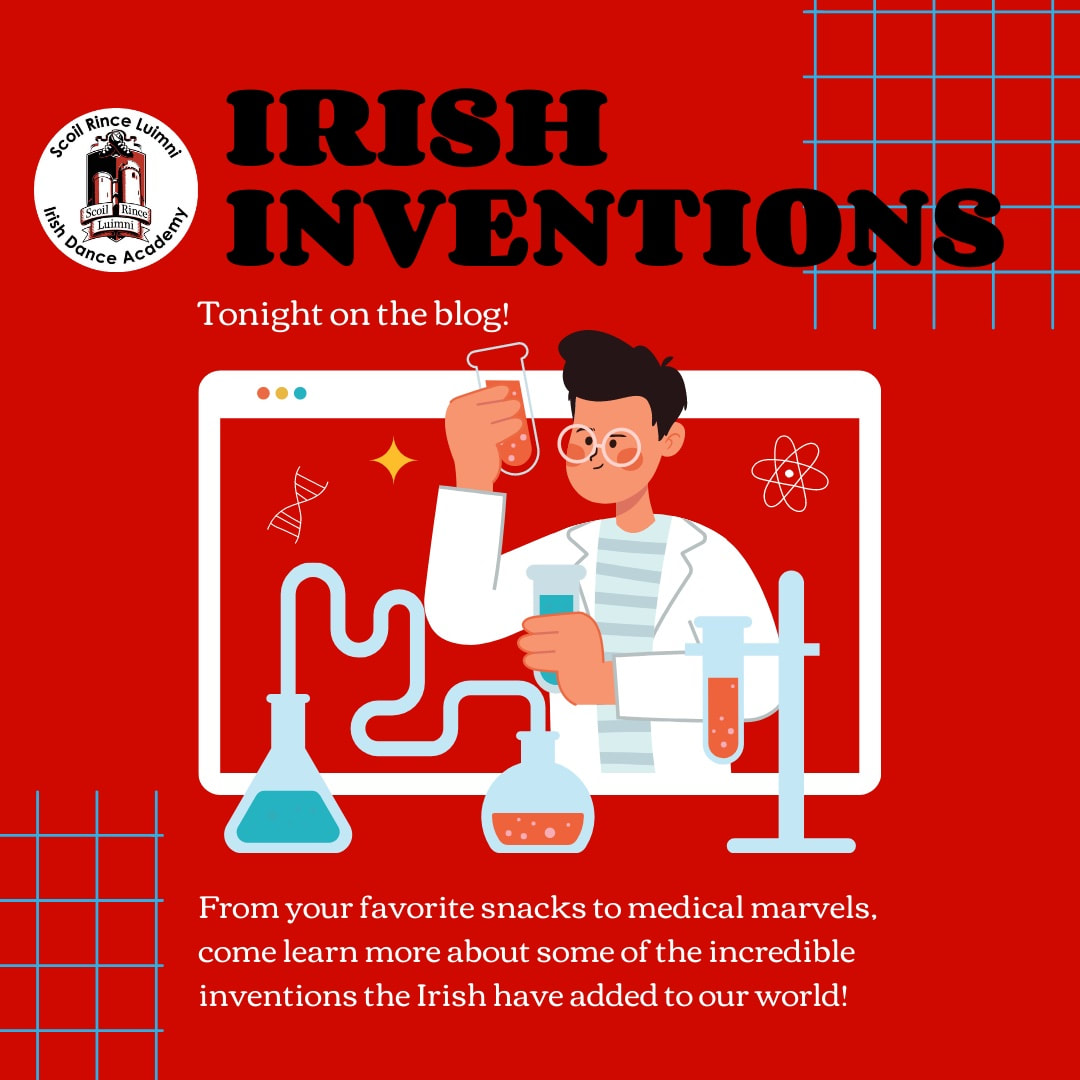|
Irish Inventions, Part 1 While the Irish have long been known as masters in the world of arts and letters (for example, Dublin holds the claim of being the only city in the world that’s birthed four Nobel Literary Laureates, but more on that another time,) what’s often overlooked are all the incredible inventions the Irish are responsible for. Below is a roundup of some of Ireland’s claims to fame—everything from your favorite snacks and cool devices to the most practical tools and medical and scientific innovations. It’s pretty inspiring, and shows that the Irish have far more than just luck! 1. This one’s perfect for a cold January day: Irish Botanist Hans Sloane invented hot chocolate/chocolate milk! Sloane spent time in Jamaica in the 1700s where the locals gave him cocoa to drink—but he couldn’t stomach it until he tried it mixed with milk. He brought it back to Britain and Ireland, where it was mainly sold as a medicinal compound for many years (which makes sense when you learn Sloane was also the physician for three different British monarchs!) 2. This one will only be exciting to any philatelists out there (aka stamp collectors!) Henry Archer was the son of an Irish landowner and educated at Trinity College Dublin before he invented the first postage stamp perforating machine in 1848. (There was a bit of competition between him and his contemporary, Archer Roulette, but Archer’s proved to work better and was sold to the Irish Postmaster General for £4,000—which would be approximately £500,000 or $686,000 today!) 3. The next invention pairs science and religion together: the induction coil was invented by Louth-born Reverend Nicholas Callan in 1837. Not sure what that is? Neither were we, but it’s pretty important for most of our everyday activities. An induction coil (i.e. a “spark coil”) allows for the generation of intermittent high voltages from a direct current—essentially, how electricity is converted into use! (He even tested it out on the Archbishop of Dublin—don’t worry, he was just knocked unconscious!) 4. Born in 1854 right here in Connecticut to Irish immigrant parents, Samuel O’Reilly invented the tattoo gun! Body modification has been a part of many cultures (including Ireland’s) since before written history, but O’Reilly most likely learned the art of tattooing while in the Navy. He patented his invention (a spin on Edison’s failed electric pen,) in 1891 and the rest is history! 5. In one of the most important medical advancements of the 20th century, Cork-native Dr. Vincent Barry led a team in the late 60s and early 70s that developed Clofazimine at Trinity College (aka the cure for leprosy.) This innovation has saved the lives of over 15 million people since its adoption by the Indian government in 1981 (and subsequent adoption around the world.) Today, leprosy remains extremely rare and is completely treatable. 6. Another Irishman who managed to save many lives is James Martin, the engineer responsible for the invention of the ejector seat (which led to increased safety in aviation, particularly in wartime.) Martin was born in County Down and formed the engineering firm Martin-Baker with Captain Valentine Baker—the test pilot for the ejector seat. Though experimentation led to Baker’s untimely death, the model he was testing is still the one in use today! 7. Apparently, before 1954, potato chips didn’t even come salted (there was a salt packet included you had to sprinkle on yourself!) But thanks to Irishman Joseph “Spud” Murphy, we not only have salted chips, but flavored ones, as well! Murphy founded the still-beloved potato chip (apologies, crisp) company Tayto and came out with the first flavored crisp in history: cheese and onion, which remains one of the most popular flavors in Ireland today! 8. The (well, original) reason you can talk to your Irish relatives across the pond? Belfast-born Lord William Thomson, 1st Baron Kelvin, who solved the issues facing transatlantic telegraph cables and helped connect the old world to the new in 1866 (after five attempts!) Bonus points: he’s still considered one of the most influential physicists and theoretical mathematicians in history. 9. Another medical marvel that came out of Ireland was the hypodermic syringe, invented in 1844 by Dr. Francis Rynd while he worked at Dublin’s Meath hospital. It’s first use was an attempt to relieve a patient who suffered from nerve pain in her face—when drinking a morphine solution was of no help, Rynd made the first subcutaneous injection, essentially also creating localized anesthetic in the process! 10. Lastly, guess who we have to thank for all the beautiful photos we take on our phones day in, day out? An Irishman, of course! John Joly invented his “Joly Color Screen,” which made color photography possible for the first time, in 1894. Joly was a physicist and inventor whose contributions also include the early development of radiotherapy to treat cancer, as well as massive contributions to the fields of geology and engineering. Talk about
But we’re not done yet. Keep an eye on the blog for another set of Irish inventors—there’s plenty more to celebrate! This post is part of a series. Read our last Irish history post, all about Irish new year traditions, here. Check out the blog every Monday and Thursday for more posts about Irish history, dance culture, community news, and spotlights on our dancers, staff, and families—among other fun projects! And don’t forget to dance along with us on both Facebook and Instagram.
0 Comments
Your comment will be posted after it is approved.
Leave a Reply. |
SRL NewsFind all of our latest news on our Scoil Rince Luimni Facebook page! Categories
All
Archives
August 2022
|

 RSS Feed
RSS Feed